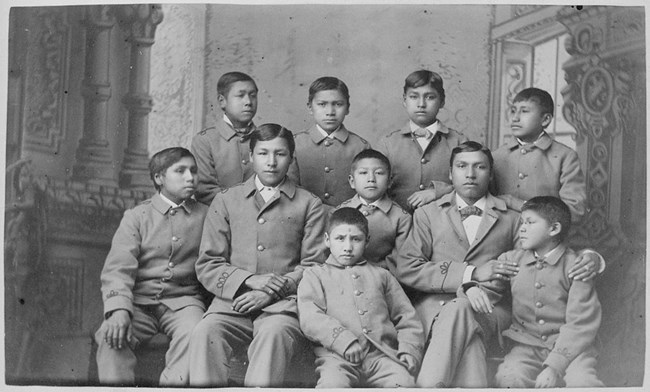Last updated: November 29, 2023
Article
The Expedition's Impact on Indigenous Americans

National Archives and Records Administration
To some, Lewis and Clark’s expedition ushered in a new and exciting time characterized by economic growth and new possibilities. To others, it would come to signify loss - the loss of land, the loss of cultural ways, and so much more
The Lewis and Clark Expedition was the first occasion for United States citizens to travel so far by river and land into the West, but it certainly wasn’t the last. Upon their return they provided detailed maps, reports about natural resources, and details about the indigenous populations they encountered. That information made it easier for others to follow and lay their claims to the abundance of resources. In fact, just four years after the expedition returned, traders were already moving deep into the Louisiana Territory to exchange goods with Plains tribes. By 1822 one man alone - William H. Ashley - employed at least 100 trappers in the Rocky Mountains.
The United States expanded significantly by acquiring the Oregon (1846) and California (1848) territories. The government was eager to populate and develop these new lands. Coincidently, the concept of Manifest Destiny was popularized. It referred to the United States’ right to expand and develop all land between the Atlantic and Pacific Oceans. The government gave land to settlers and encouraged economic ventures to spur development. The transcontinental railroad, completed in 1869, linked the Atlantic to the Pacific and replaced the flow of covered wagons with train cars. Less than 70 years after the Corps of Discovery returned from its expedition, the West was open to numerous economic pursuits.
Many saw United States’ economic expansion as the realization of Jefferson’s goals for the Lewis and Clark Expedition. To indigenous Americans, however, the Lewis and Clark Expedition symbolizes a devastating U.S. citizen invasion that challenged their ways of life.
As eastern populations moved West, the government enacted policies of removal and relocation to free up land for new settlers. The Indian Removal Act (1830) took Indian land in existing states and forcibly relocated indigenous populations to “unsettled” lands in the west, primarily to Indian Territory (present-day Oklahoma). The Indian Appropriations Act (1851) confined Native peoples to small tracts of land - known as reservations. This allowed the government to free up indigenous land so that it could more easily be redistributed. The Dawes Act - or General Allotment - of 1887 divided up reservations into tracts of land for individuals and families. Land that was left over after these tracts were created were considered “surplus” and were thus opened to white-Americans to settle. It is estimated that these and similar policies gave over 500 million acres of indigenous land to settlers and business ventures.
In the 1870s the American government began sending American Indian children to off-reservation boarding schools. Children were separated from their families and weren’t allowed to speak their native languages or practice cultural traditions. Richard Pratt, a military officer who founded some of the first boarding schools, described their purpose in a speech:
“A great general has said that the only good Indian is a dead one. In a sense, I agree with the sentiment, but only in this: that all the Indian there is in the race should be dead. Kill the Indian in him, and save the man."
These schools served to eliminate land and cultural ties in an effort to make these populations more “American.” In doing so, the government could continue to take indigenous land more easily and redistribute to those flooding the West.
There were several impacts of Lewis and Clark’s trek West. It laid the groundwork for a growing nation to expand, but it also ushered in an era of anti-Indian policy and sentiment. The policies and actions of the government following the Lewis and Clark Expedition have had resounding implications on indigenous populations that are still experienced today.
Sources
- https://www.merriam-webster.com/dictionary/manifest%20destiny
- https://www.nps.gov/parkhistory/online_books/lewisandclark/intro1.htm
- https://www.census.gov/history/www/through_the_decades/fast_facts/1800_fast_facts.html
- https://www.nlm.nih.gov/nativevoices/timeline/317.html
- https://www.loc.gov/collections/railroad-maps-1828-to-1900/articles-and-essays/history-of-railroads-and-maps/the-transcontinental-railroad/
- https://www.pbs.org/weta/thewest/resources/archives/eight/dawes.htm
Tags
- manifest destiny
- indian appropriations act
- dawes act
- indian removal act of 1830
- indigenous heritage
- indigenous peoples
- westward expansion
- travel lewis clark
- lewis and clark
- expedition
- history
- heritage
- travel itineraries
- national register of historic places
- meriwether lewis
- william clark
- boarding schools
